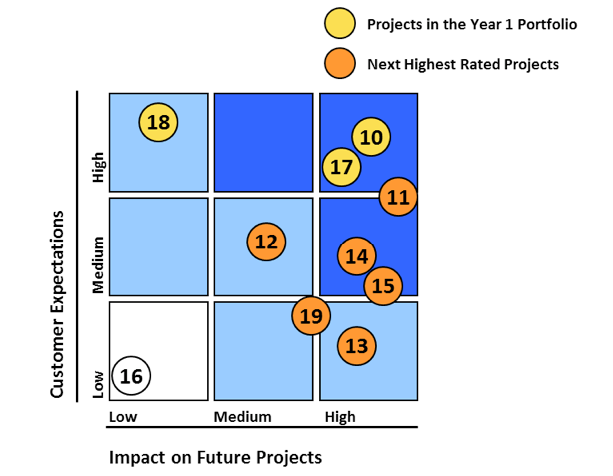The Information Technology (IT) department of a global media and entertainment company was struggling with how to make capital investment and resource allocation decisions. The company made very large capital investments every year in its technology infrastructure and software, and while the company did have an annual budgeting process for new IT projects, the actual expenditures varied widely from the original budget. The variances were due, in part, to competing priorities and an inconsistent approach for evaluating and selecting projects.
Iknow, which had done several previous assignments for the company, was asked to help with standardizing the process of reviewing and selecting proposed IT projects.
Iknow first developed standard templates for describing the various types of proposed projects. The use of common templates helped describe each project consistently and make “apples-to-apples” comparisons between projects. Project owners were asked to describe their projects’ objectives, benefits, activities, deliverables, degree of technical effort, and timetable. Thirty-two projects were defined.
Iknow then classified the projects into three groups:
- Vision Shaping Projects. Vision Shaping Projects are those projects that establish a comprehensive, enterprise-wide direction for the company’s metadata architecture. These projects can be characterized as top-down and strategic.
- Foundational Projects. Foundational Projects are those projects that indirectly create business value by providing the infrastructure to support the company’s value-creating core business processes and activities. Foundational Projects address internal data and information management processes, functional architecture, content architecture, governance, and other information technology issues.
- Revenue Enhancement Projects. Revenue Enhancement Projects are those projects that generate new revenues or expand existing revenues, usually from new or improved products and services.
Iknow categorized the proposed projects into these three groups because the criteria used to evaluate the projects varies across the groups. We defined several metrics for evaluating projects; some of the top metrics included alignment with mission, goals, and strategy; alignment with customer expectations and/or requirements; cost (to implement the project); revenue generation; return of investment (ROI); and time sensitivity/urgency.
Iknow developed a nine-box scoring grid to visually demonstrate the relative position of the projects within each group with respect to the two criteria selected for the axes. An example of relative project ranking within a category is presented in the exhibit below. Projects highlighted in yellow (numbers 10, 17, and 18) have the highest relative ranking on the Customer Expectations dimension.
Project Evaluation and Selection Grid

A day-long workshop was held with senior business and technology executives to evaluate the potential projects and to select the projects for next year’s budget. The objectives of the workshop were to:
- Establish clear definitions for each of the potential projects.
- Propose any new projects.
- Agree on a common framework for project evaluation. This includes clear definitions of the evaluation criteria.
- Evaluate the projects against the criteria to determine their relative importance.
- Select the highest-rated projects for the roadmap.
Thirteen projects were ultimately selected by the workshop participants to be included in the final project portfolio.
The Information Technology Department now has a standard process for describing, evaluating, and selecting improvement projects and capital investment and resource allocation decisions are made consistently.


